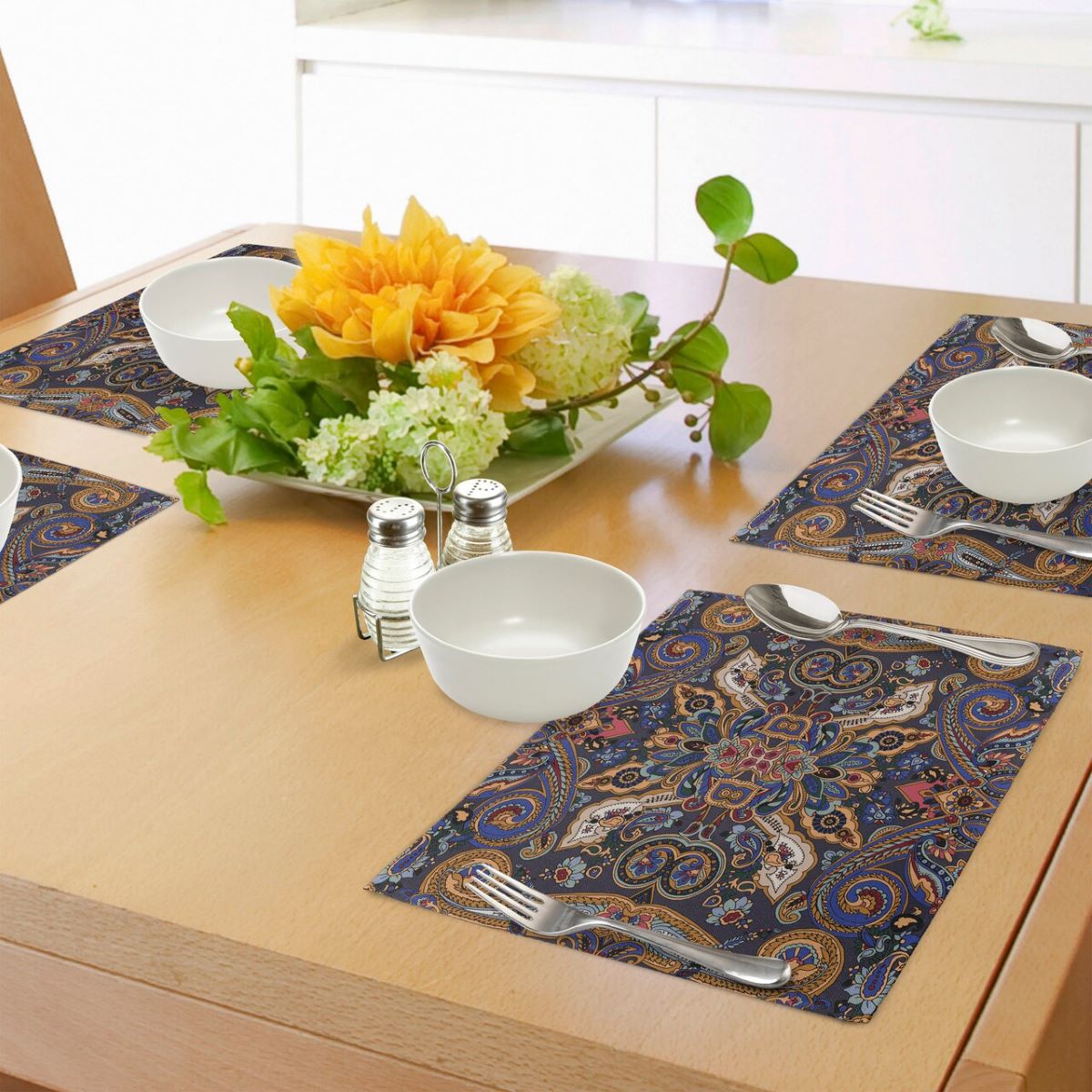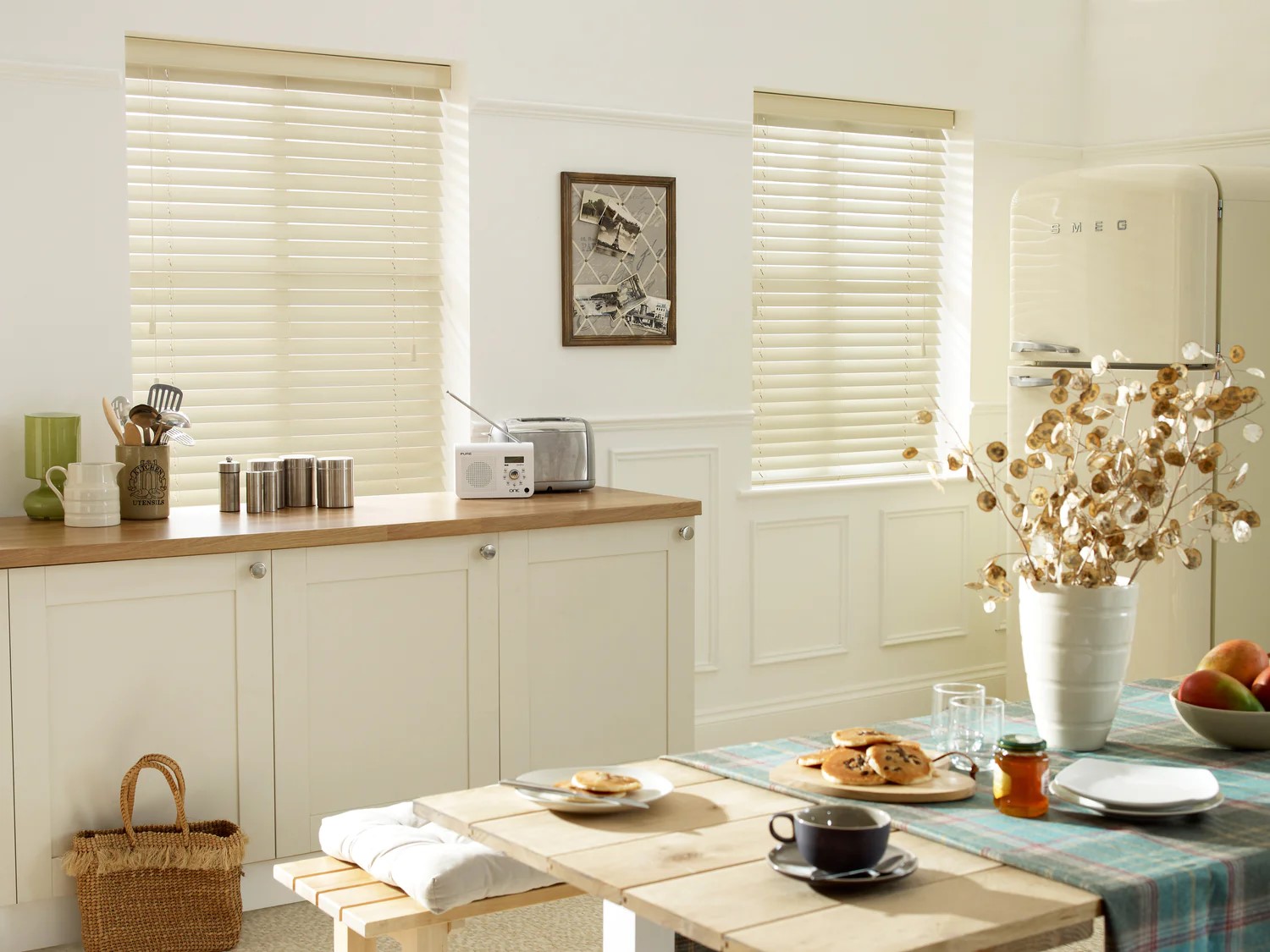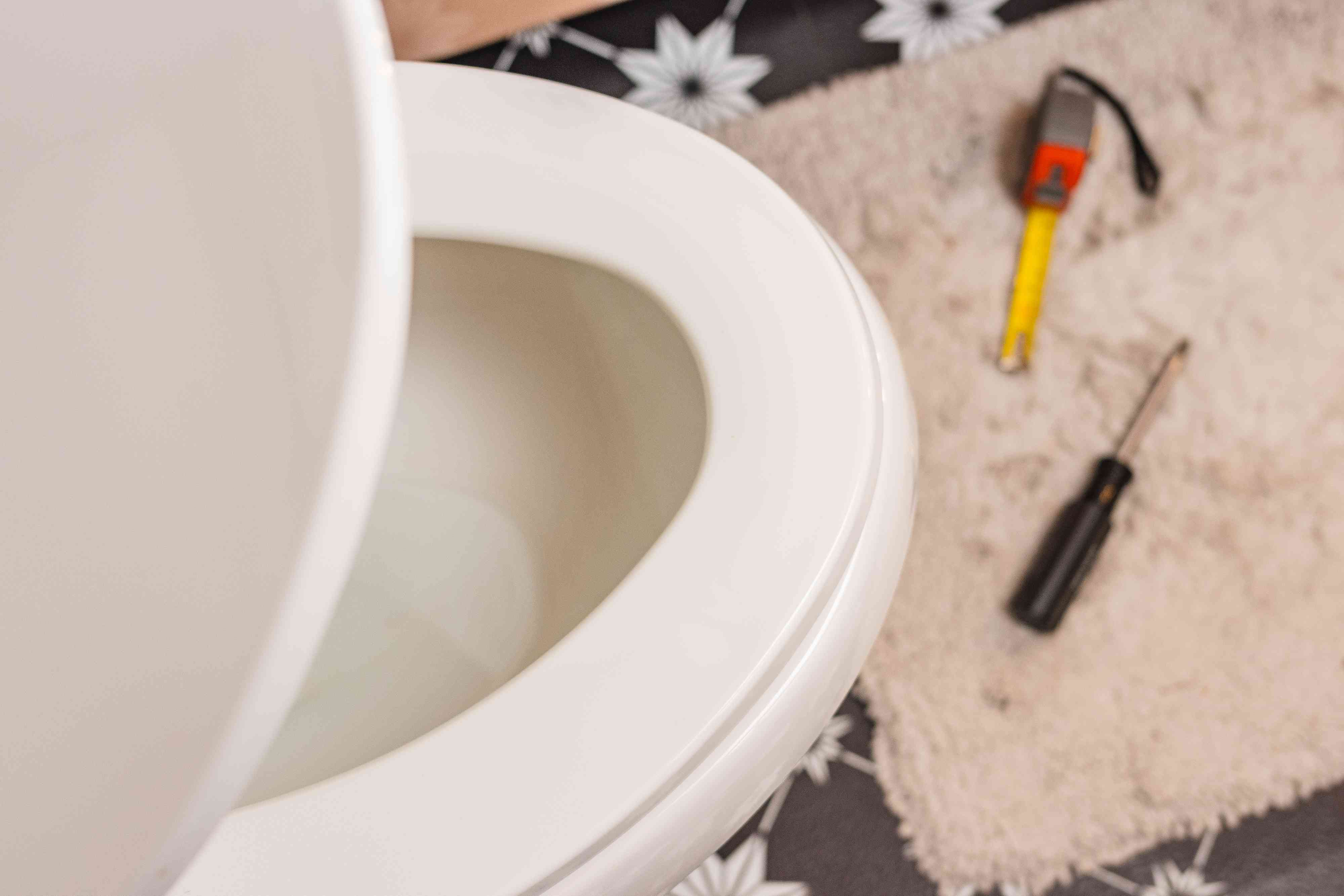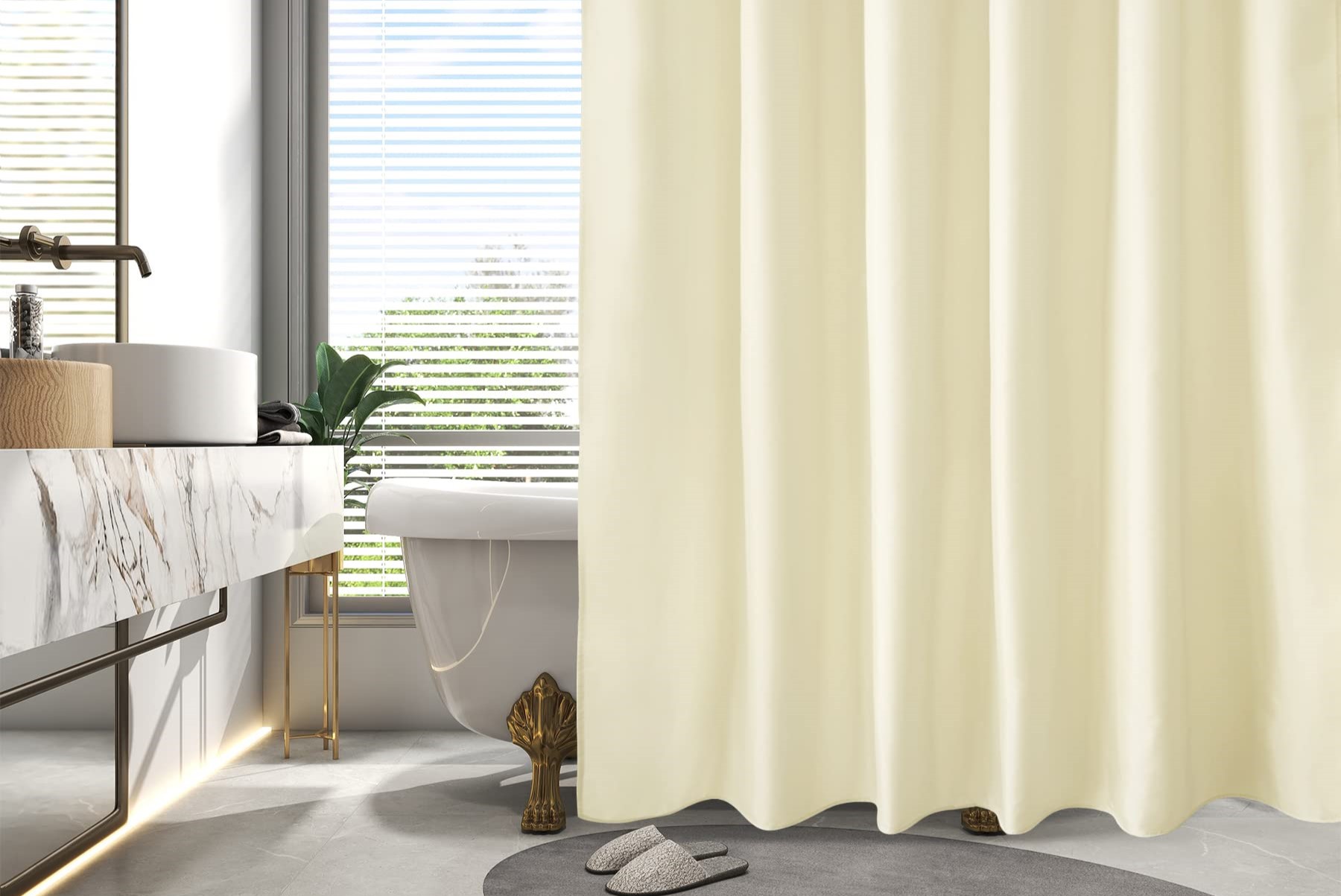

Articles
What Is The Standard Window Size For Blinds
Modified: January 9, 2024
Find out the standard window size for blinds with our informative articles. Make sure you get the right fit for your windows.
(Many of the links in this article redirect to a specific reviewed product. Your purchase of these products through affiliate links helps to generate commission for Storables.com, at no extra cost. Learn more)
Introduction
When it comes to window treatments, blinds are a popular choice for many homeowners. They offer a versatile and stylish solution for controlling light, providing privacy, and enhancing the aesthetic appeal of any room. However, before purchasing blinds, it’s essential to know the standard window sizes for blinds to ensure a proper fit and seamless installation.
In this article, we will explore the standard window sizes for blinds, factors that influence these sizes, and how to customize blinds for non-standard window sizes. Understanding the importance of accurate window measurements and tips for choosing the right blinds will also be discussed. So, let’s dive in and discover more about the world of blinds and their standard window sizes!
Key Takeaways:
- Understanding the standard window sizes for blinds is crucial for a seamless fit and optimal functionality. Factors such as window type, room size, and personal preference influence the size of blinds needed.
- Accurate window measurements are essential for selecting the right blinds. Customizing blinds for non-standard window sizes is a viable option, ensuring a perfect fit and enhancing the aesthetics of your space.
Understanding Window Sizes and Blinds
Before delving into the standard window sizes for blinds, it’s crucial to have a clear understanding of window sizes and how they relate to the installation of blinds.
Window sizes refer to the dimensions of the opening in the wall that accommodates a window. These dimensions are typically measured in width and height, and they can vary from one window to another. To ensure a proper fit, it’s important to measure both the inside and outside dimensions of the window frame.
Blinds, on the other hand, are window coverings made of horizontal or vertical slats that can be adjusted to control the amount of light and privacy in a room. They come in various styles, materials, and sizes to suit different window types and personal preferences. Common types of blinds include venetian blinds, roller blinds, vertical blinds, and cellular blinds.
To find the right blinds for your window, it’s essential to consider both the style and size of the window. The size of the window will determine the width and height of the blinds needed to cover the entire window opening.
Now that we have a basic understanding of window sizes and blinds, let’s explore the factors that influence standard window sizes for blinds.
Factors Influencing Standard Window Sizes for Blinds
The standard window sizes for blinds can vary depending on several factors. Understanding these factors will help you determine the appropriate size for your window and choose blinds that fit perfectly. Here are a few factors that influence standard window sizes for blinds:
1. Window Type: Different window types have varying standard sizes. Common window types include single-hung windows, double-hung windows, casement windows, and bay windows. Each type may have its own standard sizes, which can affect the size of blinds needed.
2. Room Size: The size of the room where the window is located can also impact the standard window size for blinds. In larger rooms, you may require larger windows, which in turn may require wider and longer blinds.
3. Architectural Style: The architectural style of your home can influence the standard window sizes. Older homes may have non-standard or custom-sized windows, which may require customized blinds.
4. Personal Preference: Your personal preference plays a significant role in choosing the standard window size for blinds. Some individuals prefer larger windows to allow more natural light, while others may prefer smaller windows for increased privacy.
5. Building Codes: Depending on your location, building codes and regulations may dictate certain window sizes for safety or energy efficiency purposes. It’s important to consider these regulations when determining the standard window size for blinds.
6. Window Surroundings: The surroundings of the window, such as the presence of furniture, fixtures, or architectural features, can impact the standard window size for blinds. These factors may necessitate adjustments to the size or style of blinds to ensure proper installation and functionality.
Remember that while there are standard window sizes for blinds, they are not set in stone. It’s always essential to measure your window accurately to ensure a proper fit and consider the specific factors that may influence the blinds’ size.
In the next section, we will explore some common standard window sizes for blinds to provide you with a starting point when selecting your blinds.
Common Standard Window Sizes for Blinds
While window sizes can vary, there are some common standard window sizes for blinds that can serve as a starting point when selecting your window treatments. Here are a few of the most common standard window sizes for blinds:
1. 36 inches by 60 inches: This is a popular size for standard single-hung or double-hung windows in bedrooms and small to medium-sized rooms. Blinds for this size window typically range from 30 inches to 34 inches in width and 54 inches to 58 inches in length.
2. 48 inches by 48 inches: This size is commonly found in kitchens, bathrooms, and small living areas. Blinds for this size window generally measure around 42 inches to 46 inches in width and 42 inches to 46 inches in length.
3. 72 inches by 60 inches: This is a larger window size commonly found in living rooms or dining areas. Blinds for this size window typically range from 66 inches to 70 inches in width and 54 inches to 58 inches in length.
4. 24 inches by 36 inches: This size is often seen in small windows or transoms in entryways or hallways. Blinds for this size window generally measure around 18 inches to 22 inches in width and 30 inches to 34 inches in length.
It’s important to note that these are just a few examples of common standard window sizes for blinds, and there are many other sizes available in the market. Additionally, the specific dimensions may vary depending on the type of blinds you choose and the installation requirements.
If your window size does not match any of the common standard sizes, it’s not an issue. Customizing blinds for non-standard window sizes is a viable option to ensure a perfect fit for your windows, which we will discuss in the next section.
The standard window size for blinds is typically 24 inches wide by 36 inches long. However, it’s important to measure your specific window to ensure the best fit.Customizing Blinds for Non-Standard Window Sizes
If your window does not fit into the standard sizes mentioned earlier, there’s no need to worry. Customizing blinds for non-standard window sizes is a common practice that allows you to achieve a perfect fit and enhance the aesthetics of your space. Here are a few steps to follow when customizing blinds for non-standard window sizes:
1. Accurate Measurement: First and foremost, it’s crucial to measure your window accurately. Measure the width and height of the window frame, both inside and outside, taking into account any trim or molding. Ensure that your measurements are precise to avoid any fitting issues.
2. Consult with a Professional: If you’re uncertain about how to measure or customize blinds for your non-standard window size, it’s always recommended to consult with a professional window treatment specialist. They can guide you through the process and provide valuable insights and expertise.
3. Consider Mounting Options: When customizing blinds for non-standard window sizes, you may have to explore different mounting options. Depending on the size and shape of your window, you can choose between inside mount or outside mount blinds. Inside mount blinds are installed within the window frame, while outside mount blinds are mounted on the wall, covering the window entirely.
4. Choose Custom Blinds: Many manufacturers and retailers offer custom blinds services, allowing you to select the style, material, and size that best suits your window. Custom blinds offer a wide range of choices, including motorized blinds, cordless operation, and various patterns and colors to match your décor.
When customizing blinds for non-standard window sizes, it’s essential to consider factors such as light control, privacy needs, and the overall aesthetic appeal. Working with a professional can ensure that your customized blinds are perfectly fitted and meet your requirements.
Read more: What Is The Standard Refrigerator Size
Importance of Accurate Window Measurements for Blinds
Accurate window measurements are crucial when it comes to selecting and installing blinds. Failing to measure your windows correctly can result in ill-fitting blinds that not only look unsightly but also compromise the functionality of the window treatment. Here are a few reasons why accurate window measurements are essential:
1. Proper Fit: Accurate measurements ensure that the blinds fit perfectly within the window frame or cover the entire window opening if you opt for outside mount blinds. This ensures a seamless and polished look that enhances the overall aesthetics of the room.
2. Light Control and Privacy: Well-fitted blinds prevent gaps or overlaps that may allow unwanted light to enter the room. Accurate measurements help in selecting the right width and height of the blinds, ensuring maximum light control and privacy.
3. Smooth Operation: Properly sized blinds operate smoothly, allowing you to adjust them effortlessly to control the amount of light and privacy you desire. Ill-fitting blinds may become difficult to open or close, affecting their usability and functionality.
4. Energy Efficiency: Accurate measurements help in selecting blinds that have a proper fit against the window frame. This minimizes the chances of air leakage, resulting in better energy efficiency. Well-fitted blinds can help to reduce heat gain during warmer months and prevent heat loss during colder months.
5. Cost Savings: By accurately measuring your windows, you avoid the cost of purchasing blinds that are too small or too large for your windows. Additionally, well-fitted blinds eliminate the need for costly adjustments or replacements in the future.
To ensure accurate measurements, use a reliable measuring tape and take multiple measurements at different points of the window frame. Consider any obstructions or architectural features that may impact the blinds’ installation. If in doubt, consulting with a professional or utilizing the services of a window treatment specialist can provide you with peace of mind and accurate measurements.
In the next section, we will provide some tips to consider when choosing the right blinds for your window size.
Tips for Choosing the Right Blinds for Your Window Size
When selecting blinds for your windows, it’s important to consider the size and proportion of the window to ensure a cohesive and visually appealing result. Here are some tips to help you choose the right blinds for your window size:
1. Take Accurate Measurements: As mentioned earlier, accurate measurements are essential. Measure both the width and height of your window frame to determine the appropriate size of blinds needed. Take into account any obstructions such as window handles, locks, or trim.
2. Consider Window Type: Different window types may require different styles or sizes of blinds. For example, large windows, such as bay windows, may necessitate wider blinds. Similarly, tall and narrow windows may call for blinds with longer lengths.
3. Scale and Proportion: Choose blinds that are proportionate to the size of your window. For smaller windows, opt for narrower slats or lighter materials to maintain a balanced appearance. Larger windows can handle wider slats or heavier materials for a more substantial and dramatic effect.
4. Mounting Options: Determine whether you prefer inside mount or outside mount blinds. Inside mount blinds fit within the window frame, preserving the window’s architectural features and providing a streamlined look. Outside mount blinds are mounted above the window frame, covering the entire window opening. This option can create the illusion of larger windows and provide maximum light blockage.
5. Consider Light Control: Assess how much light control you require in the room. If complete darkness is necessary (such as in a bedroom or media room), consider blackout blinds or shades. For spaces where you want to maximize natural light, sheer or light-filtering blinds are ideal.
6. Style and Material: Consider the overall style and décor of the room when choosing blinds. Determine whether you prefer a modern, minimalist look or a traditional, classic style. Select the appropriate material, such as faux wood, aluminum, or fabric, that aligns with your aesthetic preferences and functional needs.
7. Seek Professional Advice: If you’re unsure about the best blinds for your window size, don’t hesitate to seek advice from a professional. Many retailers and window treatment specialists offer expert guidance and can help you navigate the options based on your specific requirements.
By following these tips, you can confidently choose the right blinds that not only fit your window size but also enhance the overall appearance and functionality of your space.
Conclusion
Choosing the right blinds for your windows involves not only considering your personal style and preferences but also understanding the standard window sizes and how to customize for non-standard sizes. Accurate measurements play a crucial role in ensuring the proper fit, functionality, and aesthetic appeal of your blinds.
By understanding the factors that influence standard window sizes for blinds, such as window type, room size, and personal preference, you can make informed decisions when selecting blinds for your home. Additionally, exploring common standard window sizes and customizing blinds for non-standard sizes will help you find the perfect fit for your windows.
Accurate window measurements are vital to achieving a seamless and polished look, proper light control, and optimal privacy. Taking into account factors such as energy efficiency and cost savings, investing in well-fitted blinds is a worthwhile endeavor.
Lastly, consider the style, material, and mounting options that best suit your needs and complement your overall interior design. With the right blinds, you can not only enhance the functionality of your windows but also elevate the visual appeal of your space.
By following the tips provided in this article and consulting with professionals when needed, you can confidently choose the right blinds for your window size, ensuring a harmonious and stylish environment for years to come.
Frequently Asked Questions about What Is The Standard Window Size For Blinds
Was this page helpful?
At Storables.com, we guarantee accurate and reliable information. Our content, validated by Expert Board Contributors, is crafted following stringent Editorial Policies. We're committed to providing you with well-researched, expert-backed insights for all your informational needs.















0 thoughts on “What Is The Standard Window Size For Blinds”